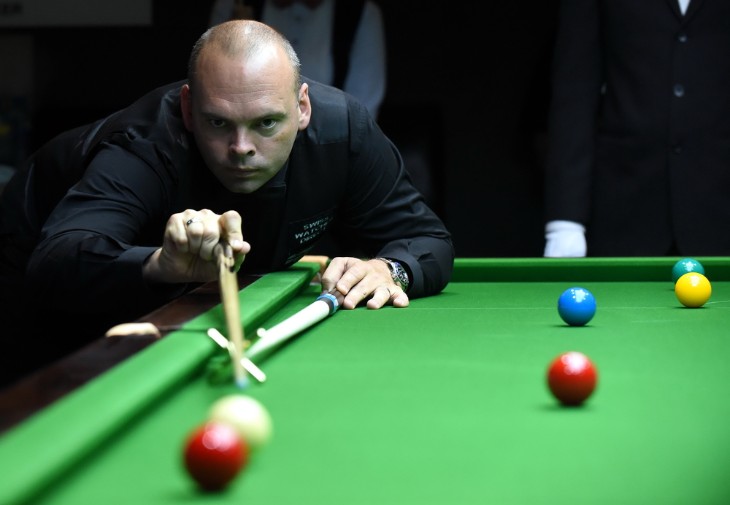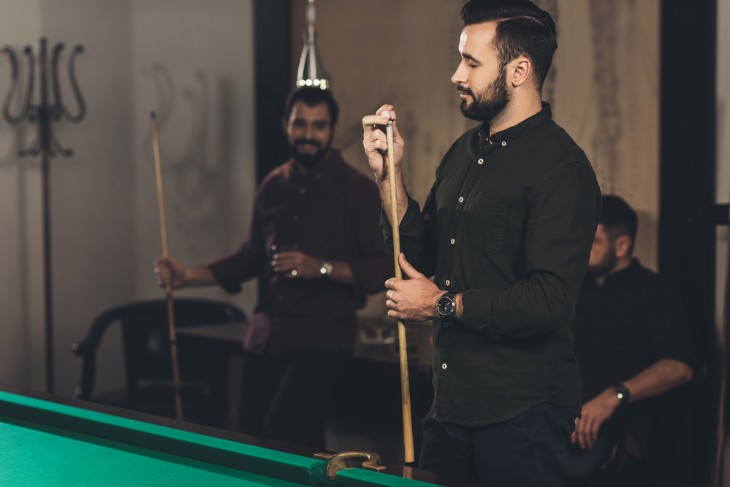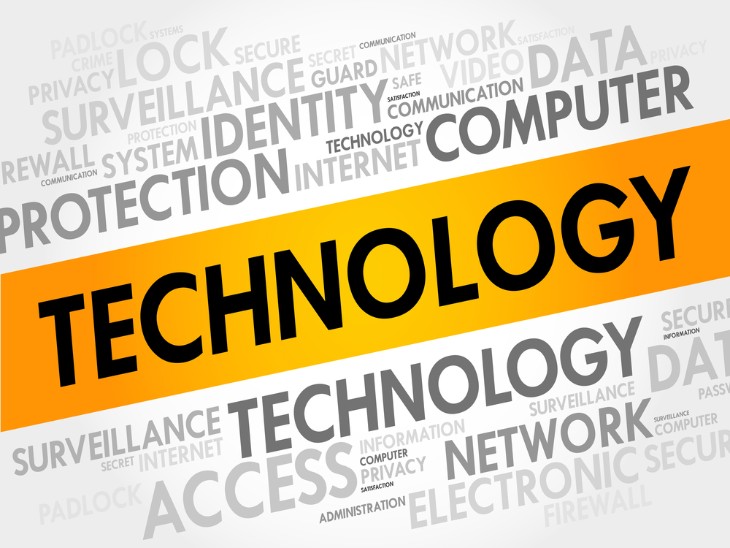In the world of snooker, a captivating blend of traditional elements and modern technology is reshaping the sport. Today's players rely on both their natural skills and advanced technologies in cue design, ball construction, and training methods. This fusion of historic practices and innovative advancements is creating a new era in snooker, balancing respect for the game's heritage with the challenges of modernity. This exploration into the evolution of snooker equipment examines how technology has influenced the sport, highlighting the intersection where tradition meets the future.
Historical Evolution of Snooker Equipment
The historical evolution of snooker equipment has been a fascinating journey that reflects the sport's growth and adaptation over the years:
I. Early Forms of Snooker Cues and Balls
A. 19th Century Origins
- Snooker originated in the latter half of the 19th century in India, where British army officers stationed there devised the game.
- Early snooker cues were rudimentary, often made of wood, and lacked the sophistication of modern cues.
- 3. Snooker balls were initially made from ivory, which was later replaced due to conservation concerns.
B. Early 20th Century Developments
- With the sport gaining popularity, cue manufacturing saw improvements in craftsmanship and design.
- The introduction of leather cue tips enhanced players' ability to control the cue ball's spin and direction.
II. Milestones in the Development of Snooker Equipment
A. 1920s-1930s: Advancements in Cue Construction
- Laminated cue tips became popular, offering better consistency and durability.
- Joint mechanisms, such as the brass joint, allow for easy assembly and disassembly of cues.
B. 1940s-1950s: Post-War Innovations
- The post-war period saw the use of more durable materials in cue construction, such as fibreglass and metal.
- Snooker tables underwent improvements in levelling mechanisms, ensuring a more even playing surface.
III. Impact of the Industrial Revolution on Cue and Table Manufacturing
A. Late 19th Century: Industrialization and Mass Production
- The Industrial Revolution led to mass production techniques, making cues and balls more accessible to the general public.
- Advancements in woodworking machinery improved the quality and precision of snooker tables.
B. 20th Century: Technological Innovations
- Precision engineering allowed for the manufacturing of consistent snooker balls, ensuring uniformity in weight, size, and bounce.
- Computer-aided design (CAD) and advanced materials revolutionized cue construction, enabling the use of materials like carbon fibre and composite materials for enhanced performance.
IV. Role of Technology in Cue Maintenance and Longevity
A. Introduction of Cue Maintenance Tools
- Tools like cue tip shapers, scuffers, and burnishers became essential for players to maintain their cues' performance.
- Cue cleaning solutions and microfiber cloths were developed to keep cues in pristine condition.
B. Advancements in Cue Repairs
- Cue repair techniques, including ferrule replacement and cue straightening, became more precise with specialized tools and equipment.
- Cue makers began using digital tools for precise measurements and customizations according to players' preferences.
Technological Advancements in Snooker Cues
Technological advancements in snooker cues have played a pivotal role in enhancing players' performance and overall gameplay. Here are some of the key aspects:
I. Introduction of New Materials
A. Carbon Fiber Cues
- Carbon fibre cues have gained popularity due to their lightweight nature and exceptional strength-to-weight ratio.
- Carbon fibre cues offer reduced cue deflection, allowing for more accurate shots, especially at high speeds and spin.

B. Composite Materials
- Cue makers have started using advanced composite materials, combining various elements like fibreglass, Kevlar, and carbon fibre.
- Composite cues provide enhanced durability and resistance to warping, ensuring a longer lifespan for the cue.
II. Changes in Cue Design for Enhanced Stability and Precision
A. Low-Deflection Shafts
- Low-deflection shafts, also known as low-squirt or low-throw shafts, minimize the amount the cue ball deflects upon impact.
- These shafts help players achieve more accurate shots, especially when applying sidespin or English to the cue ball.
B. Balanced Weight Distribution
- Cue designs have been optimized for balanced weight distribution, ensuring a comfortable and consistent feel in the player's hands.
- Balanced cues contribute to improved control, allowing players to focus on their shots rather than compensating for cue imbalance.
III. Customization Options and Their Impact on Players' Performance
A. Adjustable Weight Systems
- Some cues feature adjustable weight systems, allowing players to fine-tune the cue's weight according to their preferences.
- Customizable weight options enable players to experiment and find the optimal cue weight for their playing style.
B. Personalized Cue Lengths and Grips
- Cue makers offer customization options for cue length and grip thickness, catering to players with different hand sizes and playing preferences.
- Personalized cues ensure a comfortable and ergonomic grip, promoting better control and shot execution.
IV. Role of Technology in Cue Maintenance and Longevity
A. Innovative Tip Materials
- Advancements in tip materials, such as layered leather and specialized composites, offer improved consistency and durability.
- These tips maintain their shape and hardness over a more extended period, reducing the frequency of tip replacements.
B. Digital Tools for Cue Customization
- Cue makers utilize digital tools and software for precise measurements and customization.
- Digital technology allows for accurate tapering, joint placement, and weight distribution, ensuring a cue tailored to the player's specifications.
Innovations in Snooker Balls
Innovations in snooker balls have been crucial in ensuring a consistent and high-quality playing experience. Let’s take a closer look:
I. Materials Used in Snooker Balls
A. Ivory to Modern Materials
- Historically, snooker balls were made from ivory, but due to conservation concerns, ivory balls were replaced with alternatives.
- Modern snooker balls are predominantly made from phenolic resin, a durable and impact-resistant material.
B. Aramith Balls
- Aramith balls are a popular brand known for their high-quality phenolic resin snooker balls.
- Aramith balls are precisely engineered to meet strict size, weight, and roundness standards, ensuring uniformity across all balls in a set.
II. Impact of Manufacturing Precision on Ball Consistency
A. Consistent Size and Weight
- Advanced manufacturing techniques ensure that snooker balls are consistent in size and weight, allowing for predictable and accurate gameplay.
- Consistency in ball size and weight contributes to fair gameplay, as players can rely on the balls' uniform characteristics.
B. Perfect Sphericity
- Snooker balls are manufactured to be perfectly round, minimizing deviations that could affect the ball's path during play.
- Perfect sphericity ensures that the balls roll smoothly and predictably on the table, enhancing the precision required in the game.
III. The Role of Technology in Designing Balls for Optimal Bounce and Spin
A. Optimizing Bounce
- Advanced engineering techniques are employed to optimize the rebound and bounce of snooker balls off cushions and other balls.
- Consistent bounce characteristics allow players to accurately predict the ball's trajectory, enabling precise positional play.
B. Enhancing Spin
- Snooker balls are designed to allow players to apply spin (side, backspin, topspin) effectively.
- Modern snooker balls have a surface texture that enables players to control the amount of spin applied to the cue ball, adding depth and complexity to the game.
IV. Evolution of Ball Patterns and Colors
A. Traditional Ball Colors
- Traditional snooker ball sets consist of 15 red balls and six coloured balls: yellow, green, brown, blue, pink, and black.
- The distinctive colours help players identify and strategize their shots during gameplay.
B. Visibility Enhancements
- Innovations in colour technology have led to improvements in ball visibility, especially in televised matches.
- Balls are designed to be highly visible on television broadcasts, ensuring that viewers can follow the game easily.
These innovations in snooker balls have not only improved the quality and fairness of the game but also contributed to the overall enjoyment and accessibility of snooker for players and fans alike.
Advances in Snooker Tables
Advances in snooker tables have been instrumental in providing a consistent and reliable playing surface for snooker players. These advancements have contributed to the precision and fairness of the game. Here are some key aspects of the advances in snooker tables:
I. Materials Used in Modern Snooker Tables
A. Slate Playing Surface
- High-quality snooker tables feature a playing surface made of slate, typically three pieces, which are precision-ground to ensure a perfectly level and smooth surface.
- Slate provides excellent stability and consistency, ensuring that the balls roll true and react predictably to player actions.
B. Hardwood Construction
- The frame and cushion rails of snooker tables are constructed using hardwood, providing durability and structural stability.
- Hardwood materials resist warping and maintain the table's integrity over time, ensuring a long lifespan for the table.
II. Precision Engineering and Leveling Technology
A. Leveling Systems
- Snooker tables are equipped with advanced levelling systems, such as adjustable legs and threaded leg levellers, allowing for precise adjustments to ensure a perfectly level playing surface.
- Accurate levelling is essential for fair gameplay, as it prevents balls from rolling in unintended directions due to table unevenness.
B. Cushion Technology
- Snooker table cushions have evolved to provide consistent and reliable ball rebound.
- Cushions are made from high-quality rubber with specific firmness ratings, ensuring that balls bounce off the cushions at a consistent angle and speed.
III. Technological Enhancements for Tournament-Standard Tables
A. Heating Systems
- Tournament-standard snooker tables are equipped with heating systems that regulate the table's temperature.
- Maintaining a consistent temperature ensures that the playing surface remains dry and prevents humidity-related issues that could affect the table's performance.
B. Lighting Systems
- Proper lighting is crucial for clear visibility and shadow-free gameplay.
- Advanced lighting systems, often consisting of multiple overhead lights, are designed to evenly illuminate the entire table, eliminating glare and ensuring optimal playing conditions.
IV. Innovation in Table Design
A. Convertible Tables
- Some snooker tables are designed to be convertible, allowing them to transform into other game tables, such as pool or dining tables.
- Convertible tables maximize space utilization and offer versatility for recreational spaces.
B. Integrated Scoreboards and Technology
- Modern snooker tables may feature integrated electronic scoreboards and technology interfaces.
- These additions enhance the spectator experience and provide players with real-time scoring information, contributing to a more engaging gameplay environment.
Advances in snooker tables have significantly raised the standard for professional and recreational play. These innovations ensure that players can focus on their skills and strategies, confident in the reliability and consistency of the playing surface.
The Influence of Technology on Player Performance
The influence of technology on player performance in snooker is multifaceted, impacting various aspects of the game. Here's a closer look at how technology has influenced players' performance in the sport:
I. Equipment Precision and Consistency
A. Enhanced Cue Control
- Advanced cue construction, including low-deflection shafts and carbon fibre materials, allows players to exert more control over the cue ball.
- Reduced cue deflection and enhanced stability enable players to execute precise shots with greater accuracy, especially when applying spin or English to the cue ball.

B. Ball Reaction Predictability
- Technological advancements in ball manufacturing ensure consistent ball size, weight, and bounce characteristics.
- Predictable ball reactions enable players to plan their shots more effectively, considering how the balls will interact with each other and the cushions.
II. Training and Skill Development
A. Simulation Software
- Snooker simulation software allows players to practice various shots and scenarios in a virtual environment.
- Players can hone their skills, work on their positioning, and experiment with different strategies without needing a physical table.
B. Data Analysis Tools
- Data analysis tools track players' performance metrics, such as shot accuracy, potting percentages, and safety play effectiveness.
- Analyzing this data helps players identify their strengths and weaknesses, allowing for targeted practice sessions to improve specific aspects of their game.
III. Mental Preparation and Focus
A. Mental Training Apps
- Technology offers mental training apps designed to improve concentration, focus, and stress management.
- Players can use these apps to enhance their mental resilience, helping them stay calm under pressure and make better decisions during matches.
B. Virtual Reality (VR)
- VR technology can create immersive training environments, allowing players to simulate tournament scenarios and practice in high-pressure situations.
- VR training enhances players' mental readiness, preparing them for the intensity of professional competitions.
IV. Match Analysis and Strategy
A. Instant Replay and Slow-Motion
- Instant replay and slow-motion technologies provide players with the opportunity to review their shots and assess their technique.
- Analyzing their shots in detail helps players refine their mechanics and make necessary adjustments to enhance their overall performance.
B. Strategy Simulation
- Advanced algorithms can simulate different game scenarios, allowing players to explore various strategies and outcomes.
- Players can use these simulations to devise new tactics and game plans, adapting to different opponents and match situations.
The influence of technology on player performance in snooker is evident in the precision of equipment, the efficiency of training methods, mental preparation tools, and sophisticated match analysis. As players continue to integrate these technological advancements into their training routines, their skills and overall performance are likely to reach new heights, shaping the future of snooker as a competitive sport.
Challenges and Controversies
The integration of advanced technology into snooker equipment and gameplay has brought forth a set of challenges and controversies within the sport. One major challenge revolves around the disparity between professional and amateur players in accessing high-tech equipment. Professional players often have access to top-of-the-line cues, balls, and training software, giving them a significant advantage over their amateur counterparts. This technological gap raises concerns about fairness and equality in competitive play, as amateurs may find it difficult to compete at a high level without access to the same resources. Additionally, the rapid evolution of technology raises questions about the standardization of equipment rules. Determining which technological enhancements provide an acceptable level of advantage without compromising the integrity of the game remains a contentious issue. Striking a balance between embracing innovation and ensuring a level playing field for all players is an ongoing challenge that snooker governing bodies must address.
Moreover, the integration of technology in snooker equipment has sparked controversies related to the preservation of the sport's traditional essence. Purists and traditionalists argue that excessive reliance on advanced cues, balls, and training tools diminishes the importance of players' raw skill and expertise. There is a concern that too much emphasis on technology might overshadow the core aspects of snooker, such as strategy, precision, and mental fortitude. Additionally, debates have arisen around the use of performance-enhancing tools, such as cue tip enhancers and cue maintenance gadgets, raising ethical questions about the boundary between skill enhancement and unfair advantage. Struggles between embracing the future of snooker through technology and preserving its historical integrity create a complex landscape that continues to be a topic of passionate debate among players, fans, and officials alike. Finding common ground and establishing clear guidelines to address these challenges and controversies is essential to maintaining the sport's authenticity while embracing the benefits of technological advancements.
Summary
The impact of technology on snooker is profound, marking a transition to an era characterized by enhanced precision and wider accessibility. Technological improvements have improved cue control, ball uniformity, and training methods. However, these advancements also bring challenges in maintaining fairness, standardization, and the sport's traditional ethos. It's vital to find a balance between innovation and fair play to preserve snooker's integrity and growth. Governing bodies need to set clear rules, ensure equitable access to technology, and uphold the sport's core values. Balancing modernity with tradition is crucial in keeping snooker exciting and fair for all involved.
For more information:




.webp)


 (1).webp)




















